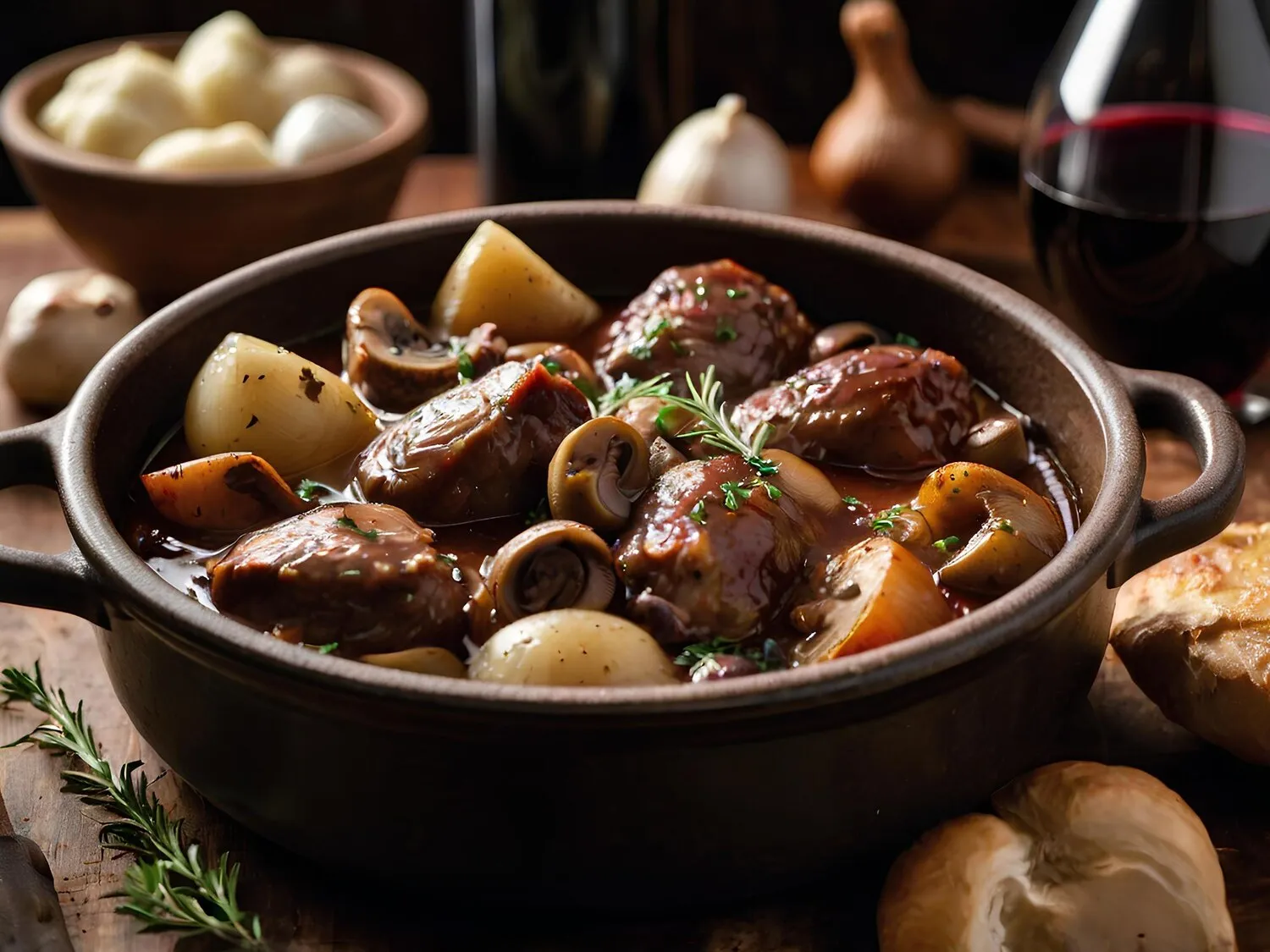
Andouillette AAAAA
Traditional French sausage made with pork chitterlings, served grilled or pan-fried.
Nutrition Facts
* The % Daily Value (DV) tells you how much a nutrient in a serving of food contributes to a daily diet. 2,000 calories a day is used for general nutrition advice.
Le Bouchon
Andouillette has a long history in French cuisine, dating back to the Middle Ages. Originally, it was a more generic term for a small andouille (a type of sausage). Over time, it evolved into a distinct sausage, particularly associated with certain regions and specific preparation methods. The 'AAAAA' designation is a modern, informal classification related to the quality and composition of the sausage, though not formally regulated.
Andouillette is a dish that evokes strong reactions – people either love it or hate it. It's considered a traditional, working-class food, particularly associated with Lyon and Troyes. It represents a willingness to embrace less commonly consumed parts of the animal and a connection to culinary heritage.
Association with Lyon and Troyes
These cities are particularly famous for their andouillette, with local variations and fervent devotees. Troyes is especially known for its andouillette made primarily from pork chitterlings.
The AAAAA Rating
The 'AAAAA' designation, while not legally regulated, is often used by butchers and restaurants to indicate a higher-quality andouillette, typically meaning a greater proportion of chitterlings and better overall ingredients and preparation.
A Test of Courage
Eating andouillette is sometimes seen as a test of culinary adventurousness, given its strong and potentially off-putting aroma to the uninitiated.
Andouillette AAAAA is known for its strong, pungent, and intensely savory flavor profile, derived primarily from its offal-based ingredients.
The primary flavor components are the distinct, earthy, and slightly fecal notes of the pork or veal chitterlings (large intestines) that make up the majority of the sausage. These are often combined with pork stomach. Aromatics like onions, wine (typically white), mustard, and herbs such as parsley and thyme contribute complexity and help balance the intensity. The cooking method (grilling, pan-frying, or poaching) also influences the final flavor, with grilling adding smoky notes.
Pre-Cooking Preparation
Some chefs recommend pre-cooking the andouillette by poaching it in water or broth before grilling or pan-frying. This helps to reduce the strong odor and ensure even cooking. Adding aromatics to the poaching liquid (e.g., bay leaf, peppercorns) can also impart flavor.
Cooking Method
Grilling is a popular method, imparting a smoky flavor that complements the sausage. Pan-frying in butter or fat is another option, creating a crispy exterior. Avoid overcooking, as this can make the sausage tough.
Serving Suggestions
Andouillette is often served with Dijon mustard, which cuts through the richness and adds a sharp contrast. It pairs well with simple sides like french fries, mashed potatoes, or a green salad. Wine pairings often include dry white wines from Burgundy or Beaujolais.
Odor Control
Be prepared for a strong odor during cooking. Ensure adequate ventilation and consider cooking outdoors if possible. Some cooks suggest adding a splash of vinegar to the cooking pan to help neutralize the smell.
Explore additional Traditional French dishes and restaurants
Explore Traditional FrenchDiscover top dining spots and culinary experiences in Tours.
Explore ToursLearn more about the food culture, restaurant scene, and culinary heritage of France.
Explore France